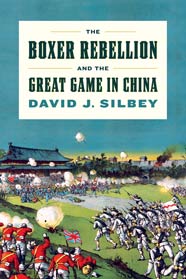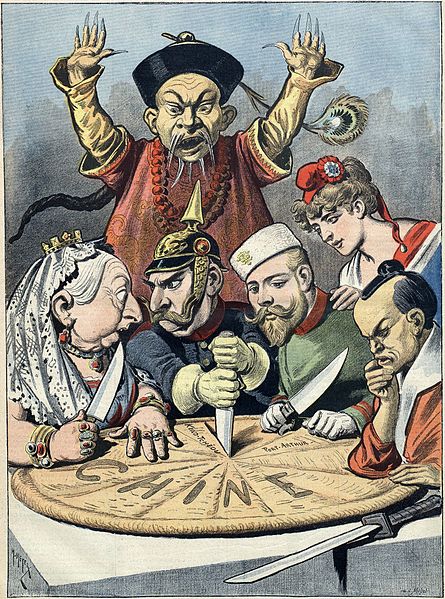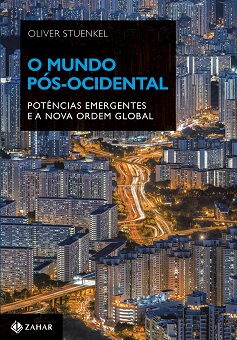
The Boxer Rebellion and the Great Game in China. By David J. Silbey. Hill and Wang; 304 pages; R$20.16 (Kindle edition, Amazon.com.br)
The “Great Game”, a term popularized by British novelist Rudyard Kipling, is usually associated with the British and the Russian Empire competing for influence in Central Asia in the 19th century. In an interesting new book, David Silbey, a historian at Cornell University, writes about China’s role as “colonalism’s last frontier” – a hotly contested, economically promising yet politically chaotic actor increasigly unable to shake off foreign domination. At the time, the New York Times described the country as the “greatest potential market in the world”.
The author vividly describes how political intrigue in Beijing and corruption in the provinces allowed social problems to fester. The railway, modern and efficient, put millions of young men out of their jobs. A severe drought, crime and economic disruption in response to growth of foreign spheres of influence then led to the rise of the anti-foreign, proto-nationalist movement by the ‘Righteous Harmony Society’ or ‘Boxers’ between 1899 and 1901, opposing foreign imperialism and Christianity. Their slogan was “Support the Qing (dynasty), exterminate the foreigners.”
It is particularly this section which helps the reader appreciate why Chinese foreign policy makers today place such a high premium on stability – and why the specter of millions of young unemployed men is regarded as a strategic threat to China’s rise.

As a British reporter in April of 1900, “the danger of the Boxers is increasing. The (…) scarcity of rain (…) is attributed to the disturbance of the feng shui by foreigners.” Soon, Boxers were attacking foreigners and railway workers across the country, spreading fear and chaos that the Empress proved first unwilling but then unable to suppress. For a time, no foreign diplomat could walk the streets of Beijing without armed guards. The murder of Baron August Freiherr von Ketteler, a German minister, and the Empress’s ultimatum for all foreign legations to leave Beijing, ultimately led to war in June, and China’s imperial troops joined the Boxers.
Silbey describes the ensuing battle scenes with gusto and in great detail in what is perhaps the book’s low point: Aside from a few experts, few readers will care about the precise movements of British ships as they prepared for combat. Rather, the author could have dedicated more time to describing the wider political implications and reactions in the international press to the conflict.
Even after military action had started, China was not particularly important to policy makers back in Europe and Washington, D.C. The United States was more worried about insurgencies in the Philippines, and the British increasingly so with the Boer forces in South Africa. In the end, the British sent Indian troops to China, which was thought to substantively reduce the risk of military revolt on the subcontinent. Silbey could have provided more information about parallel events elsewhere on the globe to draw a more complete picture of the global context within which the Boxer Rebellion occurred.
In the end, an eight-nation coalition (UK, US, Russia, Germany, Italy, Austria-Hungary, France and Japan) beat China, in what marked one of the high points of the “century of humiliation”, which only ended with the establishment of the People’s Republic of China in 1949. Silbey suggests that China could have beaten multinational forces but ultimately lost due to tactical miscalculations.
As rain returned, promising an abundant harvest, the many peasants who had joined the Boxer groups returned to their fields. The rebellion ended as quickly as it had begun. Like Berlin in 1945, Beijing was split among the various national parties. In an attempt to humiliate China, units of foreign armies marched through the Forbidden City. The Boxer Protocol, as the peace treaty was called, was harsh, as was to be expected.
The Western show of strength, however, proved to be a Pyrrhic victory in several ways. While the British Empire could still comfortably move troops from India to China, India itself would soon become London’s greatest worry. The Japanese learned that they held the key to controlling Asia, which they would demonstrate only a few years later, when they became the first non-Western country to defeat a traditional power in the Russo-Japanese War in 1905 – in 1900, Japan and Russia had still worked side by side in their joint effort to defeat China.
Read also:
Book review: “Governing the World: The history of an idea” by Mark Mazower
Book review: “China’s Superbank” by Henry Sanderson and Michael Forsythe
Book review: “From the Ruins of Empire. The intellectuals who remade Asia” by Pankaj Mishra
Book review: “The Politics of Anti-Westernism in Asia” by Cemil Aydin








